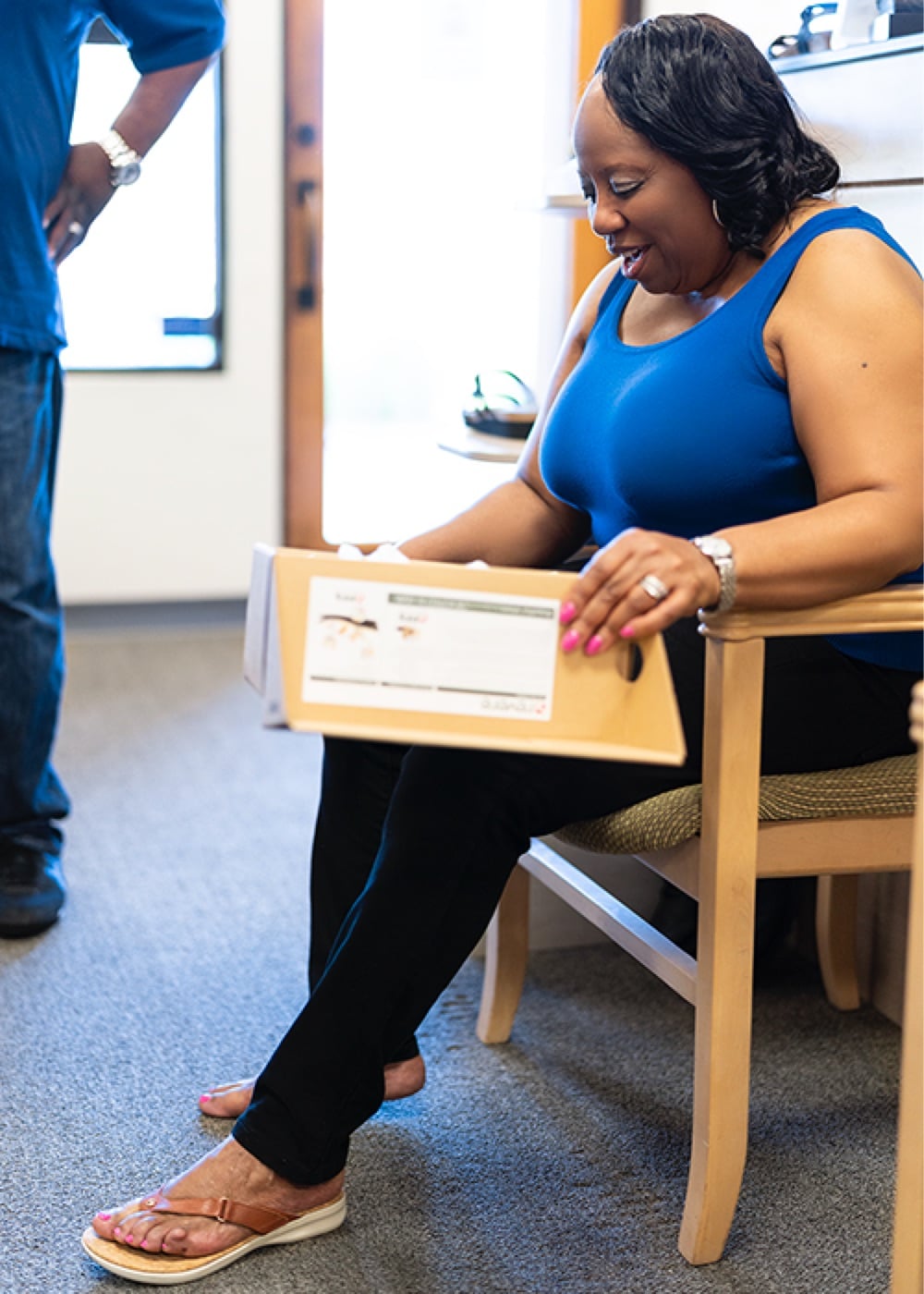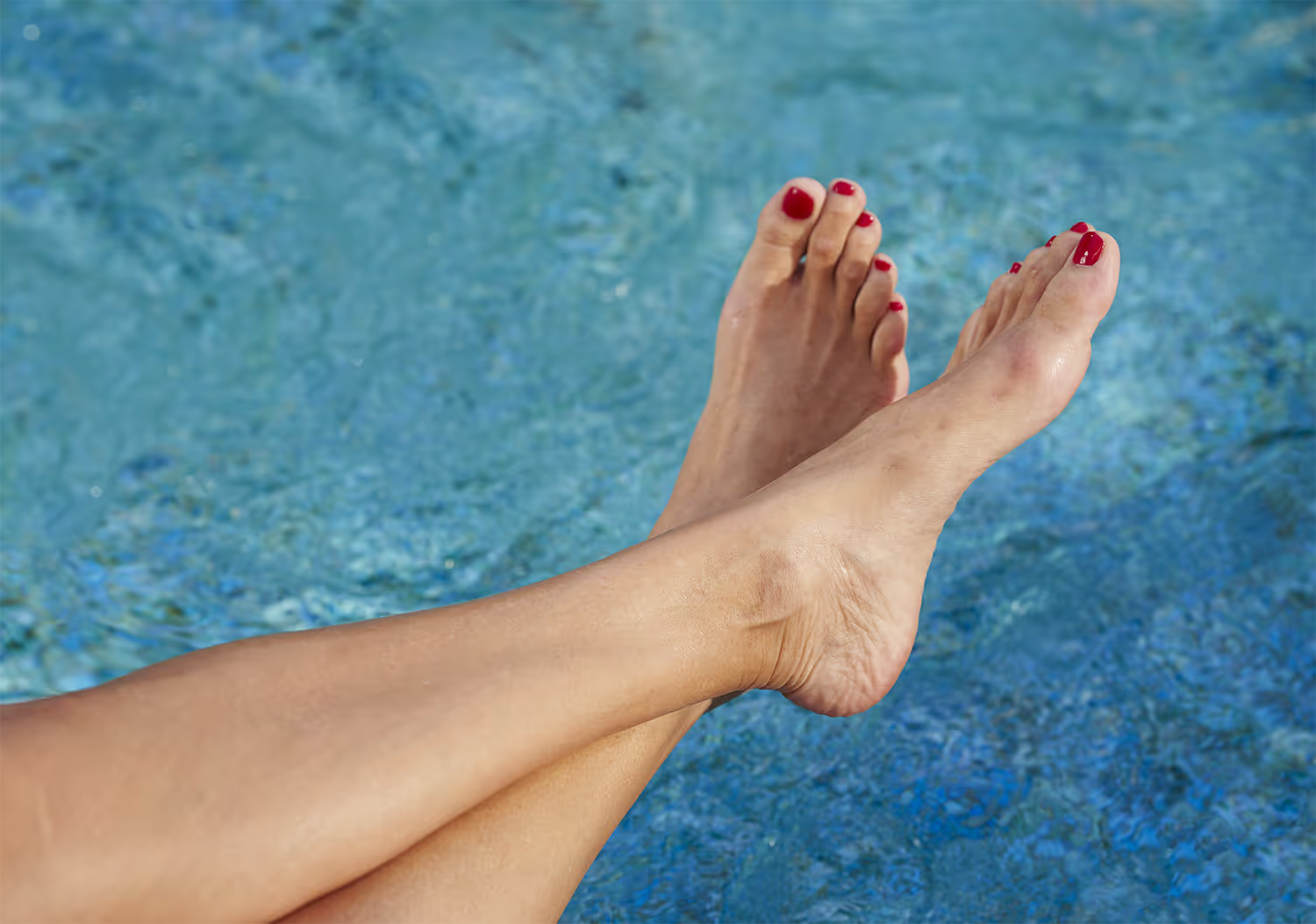
Straight Talk About Your Crooked Toe: What Is a Bunion, Anyway?
Maybe it started with a slight tingling or painful feeling at the base of your big toe. Or perhaps you removed your shoes one day and noticed redness and swelling on the inside of your foot, on the side of your big toe. No matter how you first noticed your bunion, now that small (or maybe not-so-small) bump is having a big impact on your daily life.
It’s a myth that a bunion is just a bump on the toe, like a callus. Hallux valgus, the condition that causes a bunion to develop, actually occurs when the 1st metatarsal bone in your big toe rotates out of alignment. This causes your big toe to curve inward and crowd your other toes, and the head of the metatarsal bone to poke outward, causing the characteristic bump known as a bunion.
Bunions occur on the big toe, while bunionettes—which are also known as tailor’s bunions—occur on the pinky toe.
A Common Condition With Common Causes
Bunions are an incredibly common condition across all age groups, but the likelihood of developing a bunion grows with age—in fact, the prevalence among elderly people has been estimated as high as 74%.¹'² They are also much more common in women than in men.¹
Bunions are caused by many factors, some we can control and some we cannot.
While today’s fashionable shoe wear for women includes designs, like tight confining flats and high heels, that may contribute to a bunion forming, this isn’t a modern phenomenon.
A recent archeological survey by the University of Cambridge analyzed 177 skeletons buried across the region. Over a quarter of these 14th and 15th century-era skeletons showed signs of the hallux valgus deformity, which researchers attribute to the pointy-toed style of shoes fashionable among richer men of that era.³
In addition to gender and shoe choice, genetics are another main factor that determine whether you are likely to get a bunion.
Whether caused by genetics or a lifetime of being on your feet wearing not-so-comfortable shoes, though, bunions can have a huge impact—particularly if they are left untreated and become severe.
Bunions Can Lead to Other Conditions If Left Untreated
Bunion sufferers can experience a variety of impacts from the deformity, including pain from long periods of standing or walking, the inability to wear some types of shoes, and of course a growing bunion on the side of the big toe.
But you may not know that bunions, left untreated or not treated adequately, can lead to a number of other foot conditions as well.
Bursitis can occur whether or not you have a bunion, but bunions can certainly cause it. Bursitis occurs when the fluid-filled sacs that cushion the area around your toe, called bursae, become inflamed. When your bunion rubs against your shoes, this inflammation can occur.
Bunions are also often associated with metatarsalgia. This is because your big toe, when it has a bunion deformity, may have trouble supporting your weight, shifting it to the other bones in the ball of your foot and causing them to become overburdened and sore.
Hammertoe can also occur when you have a bunion because the muscles and tendons of your toe have been pushed out of position by the misalignment of your big toe (AKA, your bunion). It can be a very painful complication of your bunion.
Similarly, crossover toe frequently happens in association with a bunion. This condition is what it sounds like—one toe, usually the toe next to your big toe, crosses over and sits on top of the other. This can cause pain and tight muscles, and like your bunion can cause wearing restrictive shoes to be very
uncomfortable.
All of these potential bunion complications may be reasons to look into surgical correction of your bunion.

If the Shoe (Doesn’t) Fit, It May Be Time for Surgical Correction
Cinderella was onto something: The fit of your shoe is very important for comfort and mobility, whether you need them for gliding across a ballroom with Prince Charming, performing the duties of your job, or enjoying an athletic activity.
If you have a bunion, you may find yourself unable to wear shoes that were once comfortable, or making accommodations for your growing bunion.
Before she got the Arthrex Minimally Invasive Bunionectomy, real-life patient Loretta C’s painful bunion on her big toe meant that she bought every pair of shoes a half-size too big to accommodate it. And for Loretta, who once enjoyed shopping for the latest footwear fashions, it meant she couldn’t wear what she once loved because of her bunion symptoms.
“There was always an issue of how wide was the shoe? How comfortable was the shoe?” Loretta says.
Other bunion sufferers rely on limiting activities that cause bunion pain, or use nonsurgical treatments such as toe spacers and bunion “correctors.” But for those people whose bunions are considered moderate or severe, these conservative treatments may not work.
And, keep in mind: Because this is a deformity and not just a bump, information you might see about “shrinking” your bunion is misleading.
Unfortunately, hallux valgus—your bunion—will not reverse without surgical correction. And as it progresses, the deformity will become more prominent and your symptoms may increase.
If this happens to you, it may be time to explore your surgical options for bunion correction. The Arthrex Minimally Invasive Bunionectomy can be used to treat bunions of any severity, since your Arthrex Bunionectomy surgeon customizes the correction to treat your specific bunion.
To learn more and find a surgeon in your area who has received specialized training in the Arthrex Minimally Invasive Bunionectomy procedure, find a doctor.
Loretta C is a real patient who was compensated for the time she took to share her personal experience with the Arthrex Minimally Invasive Bunionectomy procedure.
References
- Ferrari J. Bunions. BMJ Clin Evid. 2009;2009:1112.
- Nix S, Smith M, Vicenzino B. Prevalence of hallux valgus in the general population: a systematic review and meta-analysis. J Foot Ankle Res. 2010;3:21. doi:10.1186/1757-1146-3-21
- British Broadcasting Corporation. Medieval pointy-toed shoes led to Cambridge bunion surge. Accessed September 28, 2021. https://www.bbc.com/news/uk-england-cambridgeshire-57427365



